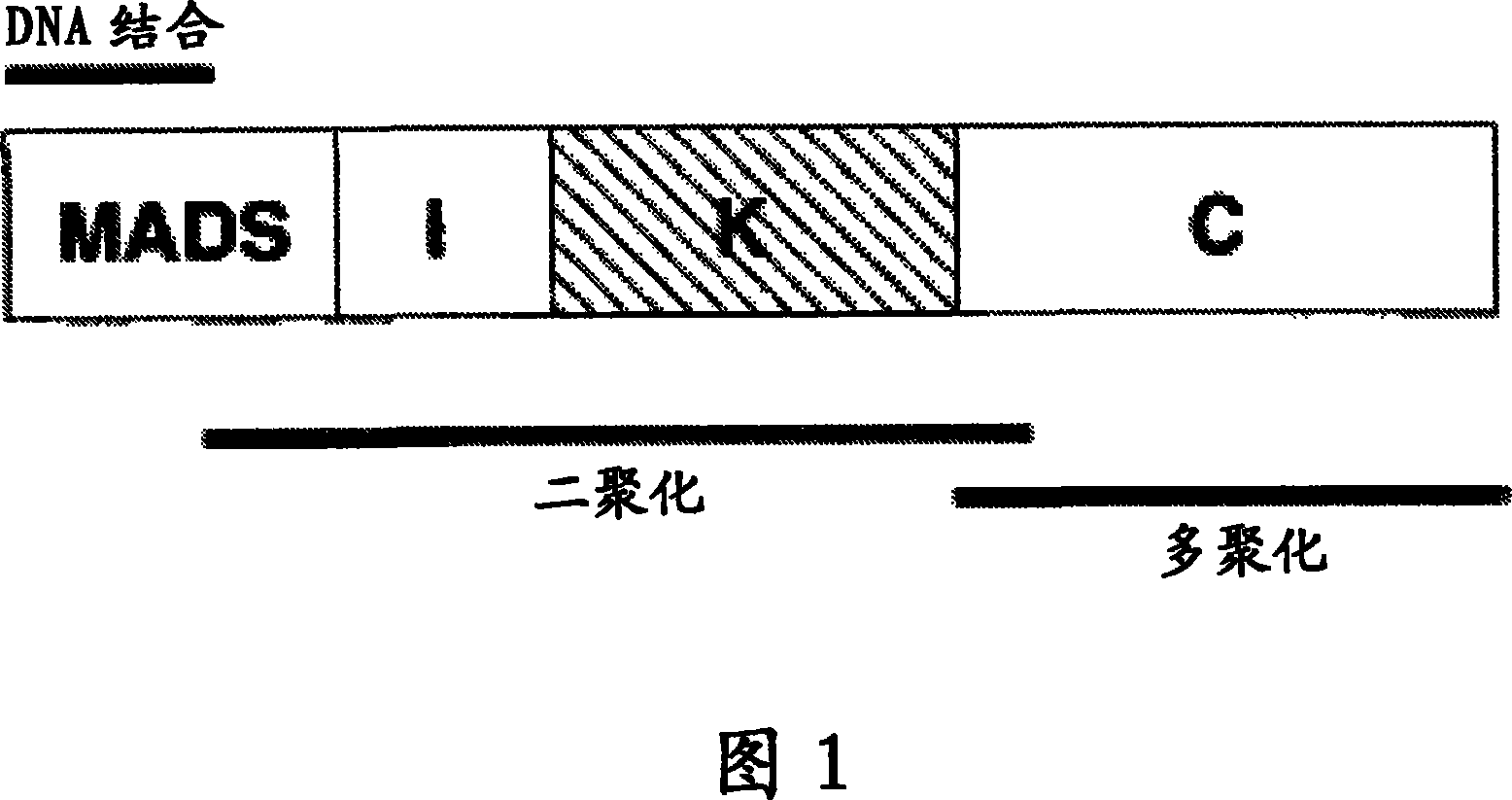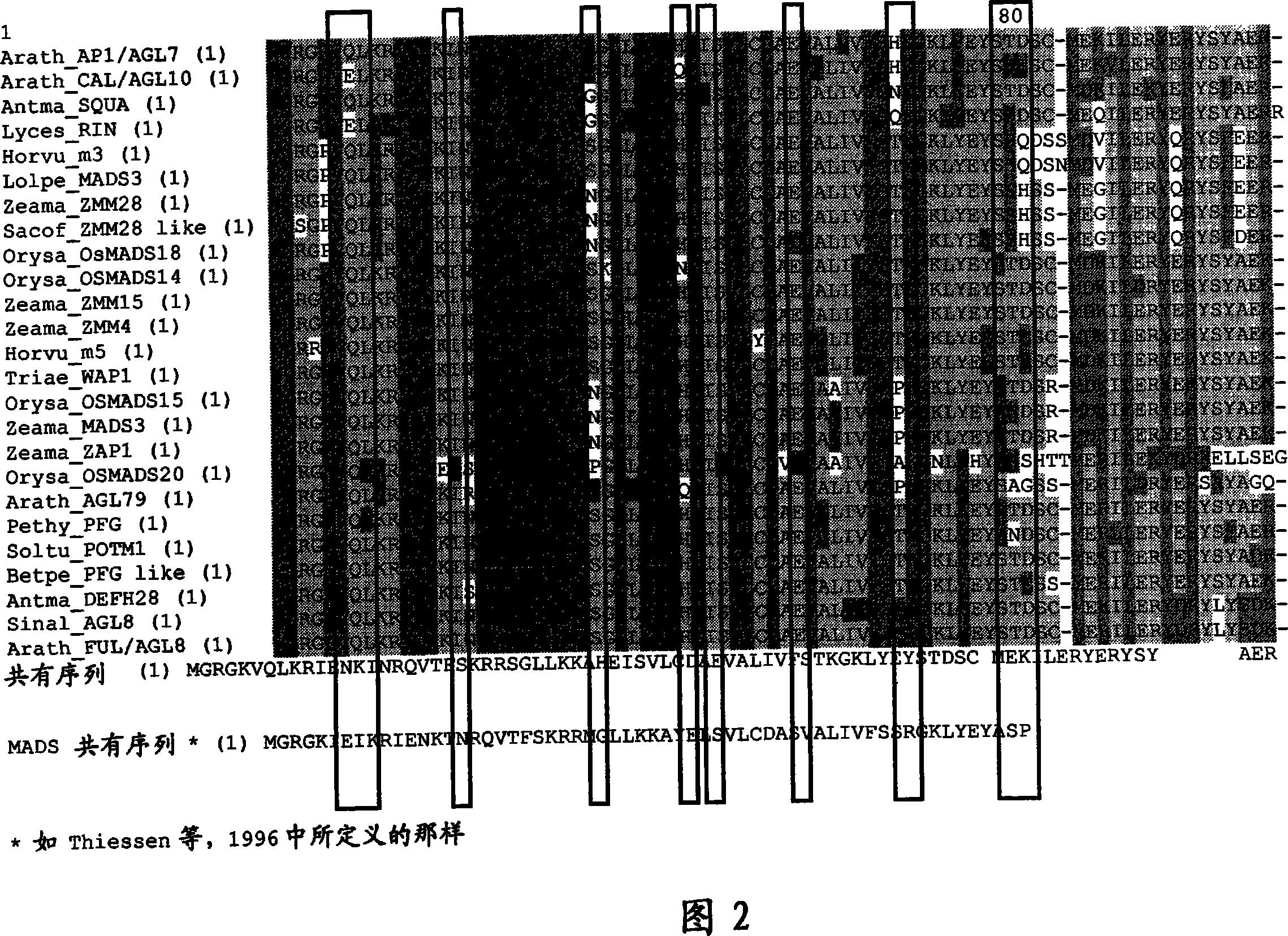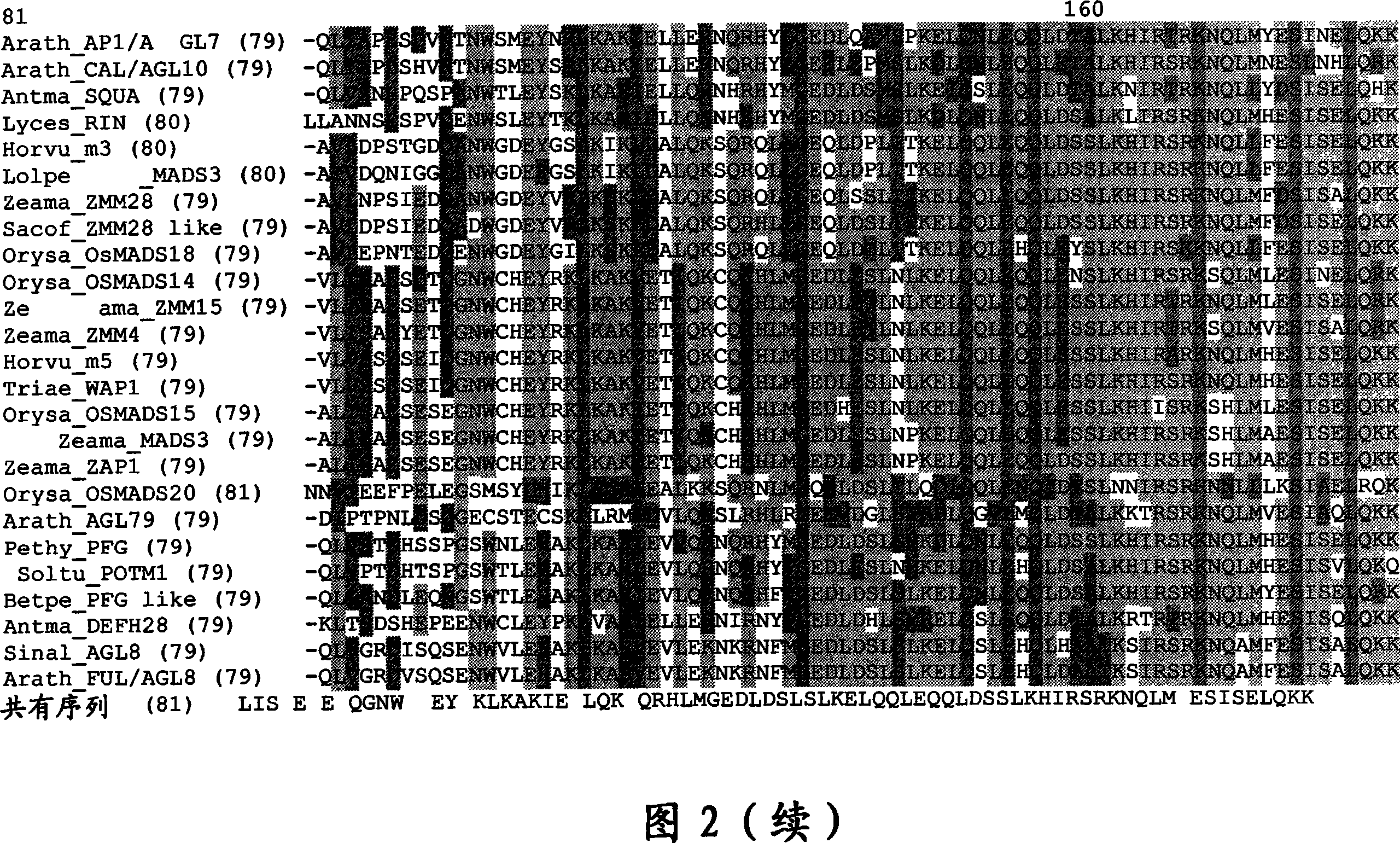Plants having increased yield and a method for making the same
A plant and yield technology, applied in the field of molecular biology, to achieve the effect of increased seed yield and increased yield
- Summary
- Abstract
- Description
- Claims
- Application Information
AI Technical Summary
Problems solved by technology
Method used
Image
Examples
Embodiment 1
[0137] Example 1: Gene Cloning
[0138] The rice OsMADS18-like gene (CDS1522) was amplified by PCR using a rice seedling cDNA library (Invitrogen, Paisley, UK) as a template. After the RNA extracted from the seedlings was reverse transcribed, the cDNA was cloned into pCMV Sport 6.0. The library has an average insert size of 1.6kb, and the number of original clones is on the order of 1.67×10 7 cfu. in 6×10 10 After the first amplification of cfu / ml, the original titer was determined to be 3.34 × 10 6cfu / ml. After plasmid extraction, 200 ng template was used in 50 μl PCR mix. The primers used for PCR amplification include the AttB site of Gateway recombination, which is prm05821 (SEQ ID NO: 20; positive, the start codon is in bold, and the AttB1 site is in italics: 5'-GGGGACAAGTTTGTACAAAAAAGCAGGCTTCACAATGGGGAGAGGG CCG 3') and prm05822 (SEQ ID NO: 21; antisense, complementary, stop codon in bold, AttB2 site in italics: 5'GGGGACCACTTTGTACAAGAAAGCTGGGTTGAGTGGAGTGACGTTTGAGA3')...
Embodiment 2
[0139] Embodiment 2: vector construction
[0140] Next, the entry clone p05838 was used in the LR reaction together with the designated vector p05294 for rice transformation. This vector contains the following as functional elements within the T-DNA borders: plant selectable marker; selectable marker expression cassette; Gateway expression cassette designed for in vivo recombination LR with the sequence of interest cloned into the entry clone. The rice OSH1 promoter (PRO0129) (SEQ ID NO: 22) for early shoot apical meristem expression was upstream of this Gateway cassette (Matsuoka et al., Plant Cell 5 1993, 1039-1048).
Embodiment 3
[0142] Example 3: Evaluation and results of OsMADS18 under the control of the rice OSH1 promoter
[0143] Approximately 15 to 20 independent TO rice transformants were generated. Primary transformants were transferred from the tissue culture room to the greenhouse for growth and T1 seeds were harvested. Five events were retained in which the T1 generation segregated 3:1 for the presence / absence of the transgene. Approximately 10 T1 seedlings containing the transgene (heterozygous and homozygous) and approximately 10 T1 seedlings lacking the transgene (nullzygote) were selected in each event by monitoring the expression of the visible markers. The 4 T1 events were further evaluated in the T2 generation, following the same evaluation method as the T1 generation, but using more individuals per event.
[0144] Statistical analysis: F-test
[0145] A two-way ANOVA (Analysis of Variation) was used as a statistical model for the overall assessment of plant phenotypic properties. ...
PUM
 Login to View More
Login to View More Abstract
Description
Claims
Application Information
 Login to View More
Login to View More - R&D
- Intellectual Property
- Life Sciences
- Materials
- Tech Scout
- Unparalleled Data Quality
- Higher Quality Content
- 60% Fewer Hallucinations
Browse by: Latest US Patents, China's latest patents, Technical Efficacy Thesaurus, Application Domain, Technology Topic, Popular Technical Reports.
© 2025 PatSnap. All rights reserved.Legal|Privacy policy|Modern Slavery Act Transparency Statement|Sitemap|About US| Contact US: help@patsnap.com



